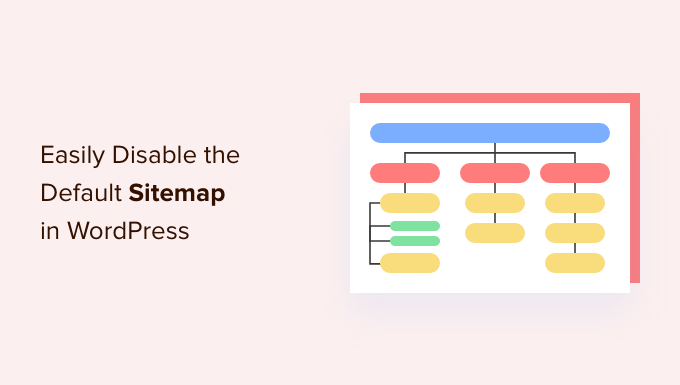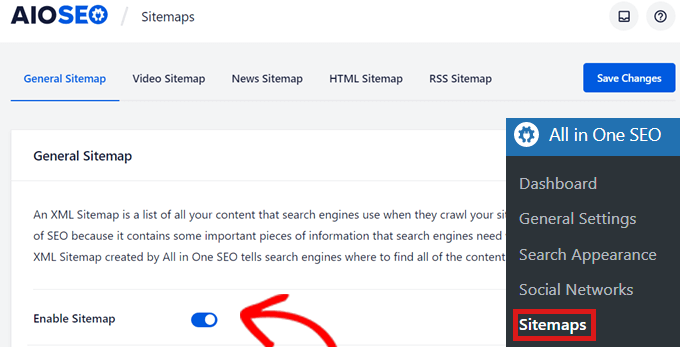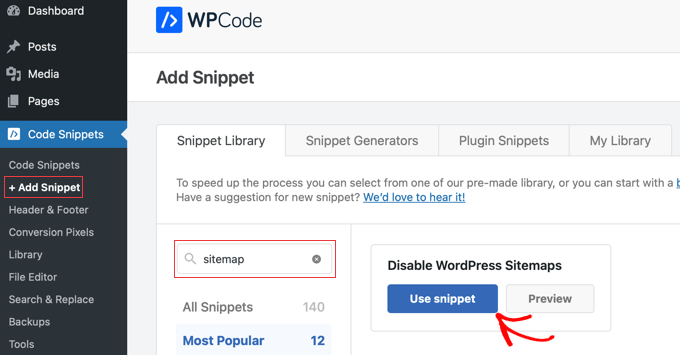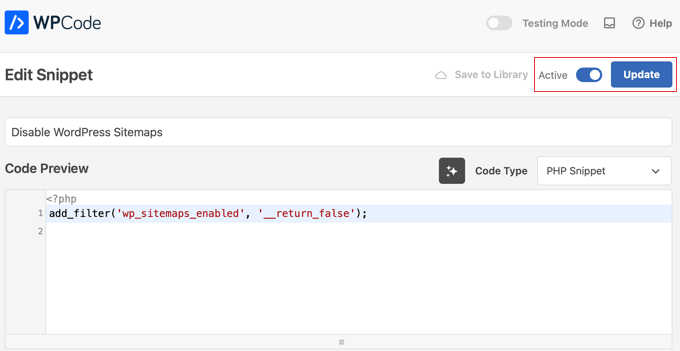When WordPress 5.5 rolled out, we noticed something interesting – a new built-in XML sitemap feature. While this was great news for many users, we quickly realized it wasn’t ideal for sites already using popular SEO plugins like AIOSEO or Yoast, which offer better sitemap features.
In fact, having multiple sitemaps can actually confuse search engines and potentially impact your SEO efforts. We’ve seen firsthand how this duplicate sitemap issue can cause unnecessary headaches for website owners.
That’s why we put together this straightforward guide to show you exactly how to disable the default WordPress sitemap. We’ll share multiple methods that work for different skill levels – whether you’re comfortable editing code or prefer a no-code solution.
By the end of this guide, you’ll have a clean, single sitemap that search engines can understand.

Why Should You Disable WordPress Sitemap
An XML sitemap is a file that lists all your website content in an XML format, which makes it easy for search engines to discover and index your content.
Sitemaps are very beneficial for your website as they bring more traffic and improve the SEO rankings of your site.
However, numerous WordPress SEO plugins like All in One SEO, Yoast SEO, and Google XML Sitemaps already implement sitemaps on your website, which results in WordPress pages having two sets of sitemaps.
Duplicate sitemaps for the same WordPress page can confuse search engines and can drop your SEO rankings.
If you are not using a search engine optimization plugin for your sitemap, then you are missing out on advanced features. For example, many popular WordPress SEO plugins offer features like a Video Sitemap, News Sitemap, and RSS Sitemap to help you outrank your competitors in SEO.
With that being said, let’s see how you can easily disable the default WordPress sitemap:
Method 1: Disable WordPress Sitemap Using WordPress SEO Plugin
If you are using any of the popular WordPress SEO plugins, then it will automatically disable the default WordPress sitemap feature and replace it with a more powerful solution.
For the sake of this tutorial, we will be demonstrating the AIOSEO plugin because that’s the plugin we use on WPBeginner.
All in One SEO is the best WordPress SEO plugin that allows you to easily optimize your WordPress website for search engines and social media platforms. Over 3 million websites use AIOSEO, including our own.
By default, All in One SEO will enable their Sitemap feature for you, which automatically replaces the basic WordPress sitemaps upon activation.
The first thing you need to do is install and activate the free AIOSEO plugin. For more details, please see our guide on how to install a WordPress plugin.
Once activated, you will need to configure the AIOSEO plugin. If you need help, then you can follow our step-by-step guide on how to set up All in One SEO in WordPress correctly.
After that, head over to the All in One SEO » Sitemaps page from the WordPress admin dashboard to review your sitemap settings.
Next, navigate to the ‘General Sitemap’ tab. Here, make sure that the ‘Enable Sitemap’ switch is set to ‘Active’. This will disable the default WordPress sitemap.

Aside from the General Sitemap, we recommend that you enable the video sitemap, news sitemap, and RSS sitemap on your site to maximize your SEO rankings.
Method 2: Disable WordPress Sitemap Using Code Snippet
You can also easily deactivate the default WordPress XML sitemap using code, too. You can add the code snippet in your theme’s functions.php file.
However, the biggest problem in adding code to your functions.php file is that even a tiny mistake can break your WordPress site.
That is why we recommend using WPCode to add custom code to WordPress. This free plugin makes it easy to add code snippets in WordPress without having to edit your theme’s functions.php file.
First, you need to install and activate the WPCode Free Plugin. For further instructions, check out our guide on how to install a WordPress plugin.
Next, go to Code Snippets » + Add Snippet in the left-hand menu of your WordPress dashboard. WPCode will then take you to the ‘Add Snippet’ page.
Now you need to search for WPCode’s built-in snippet for disabling WordPress sitemaps. Once you find it, simply hover your mouse over the entry and then click the ‘Use snippet’ button.

You will be directed to the ‘Edit Snippet’ page, where you can see that the code and other details of the snippet have already been completed for you.
All you need to do is toggle the switch from ‘Inactive’ to ‘Active’ at the top right corner, and then click the ‘Save Snippet’ button.

Once you have saved and activated the code snippet, it will be active, and the default WordPress sitemap will be disabled.
We hope this article helped you learn how to disable the default WordPress sitemap. You may also want to see our ultimate WordPress SEO guide to improve your rankings and our expert picks of the best SEO rank tracker tools for keyword tracking.
If you liked this article, then please subscribe to our YouTube Channel for WordPress video tutorials. You can also find us on Twitter and Facebook.





Have a question or suggestion? Please leave a comment to start the discussion.